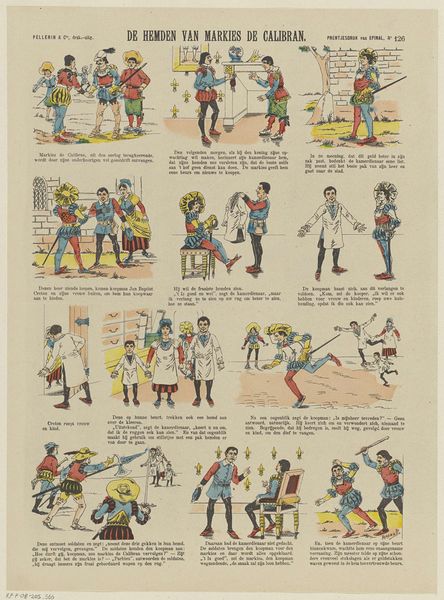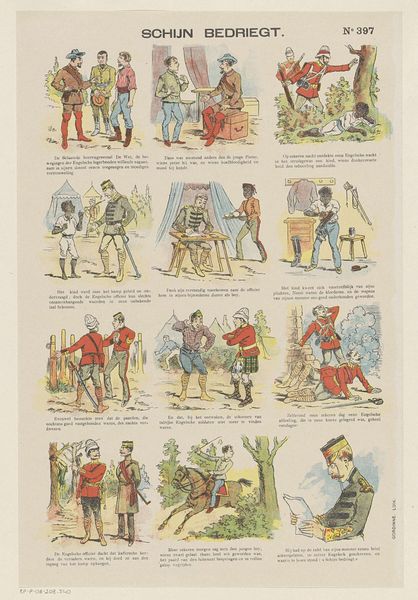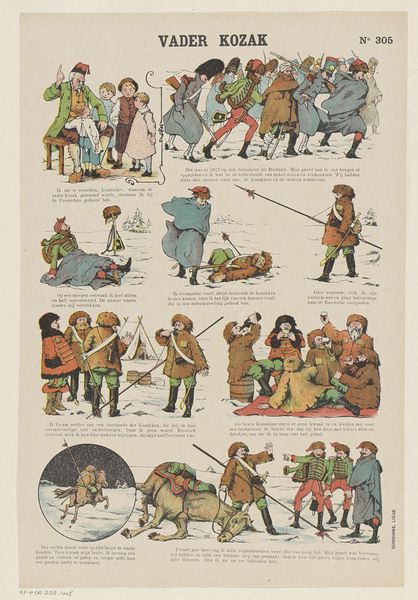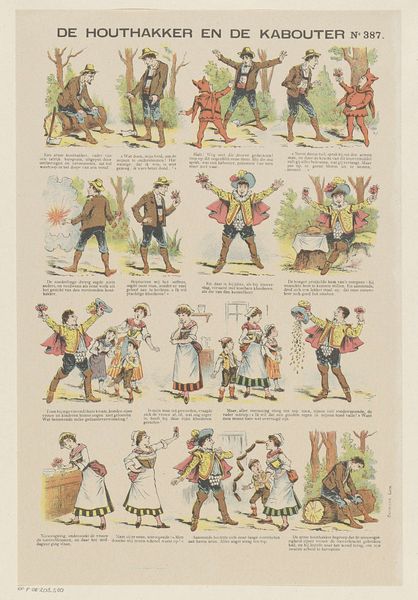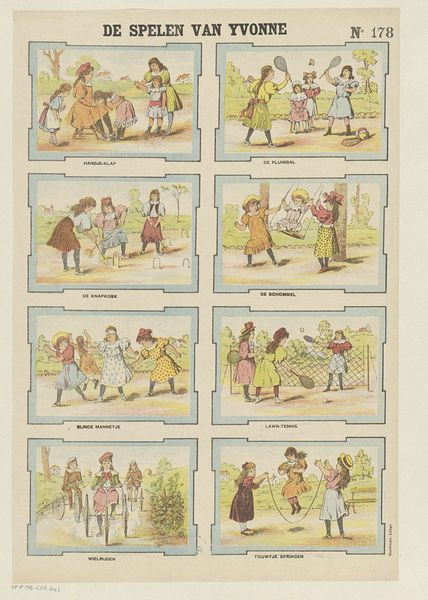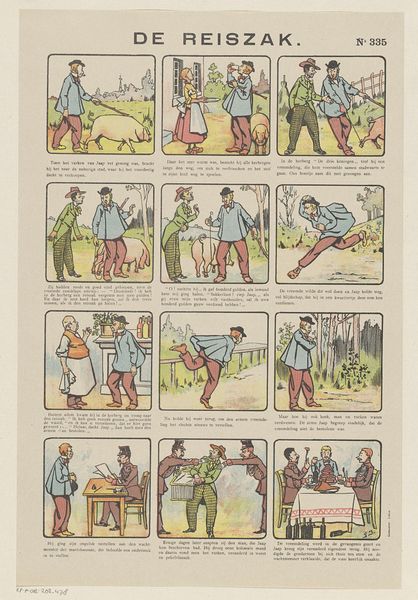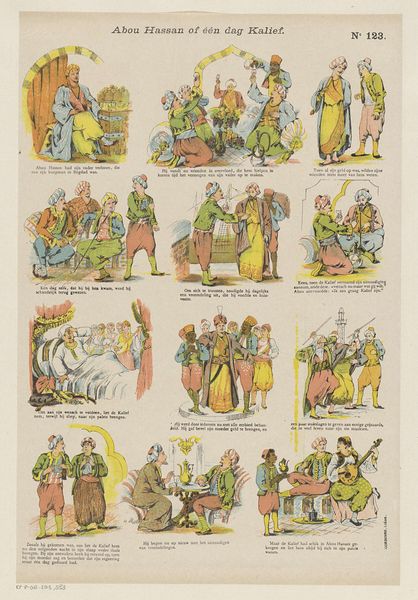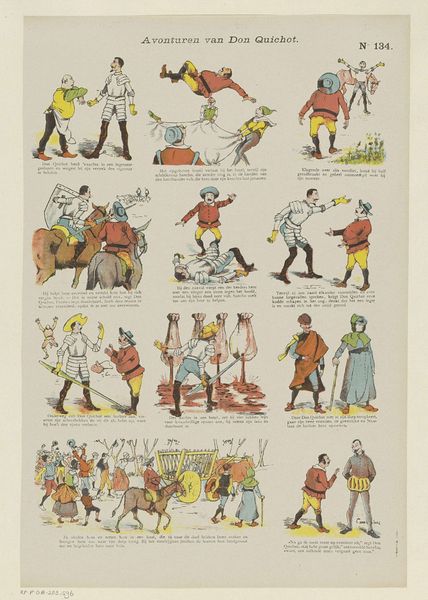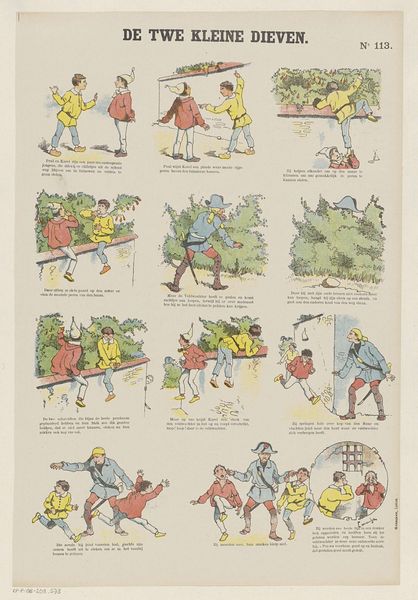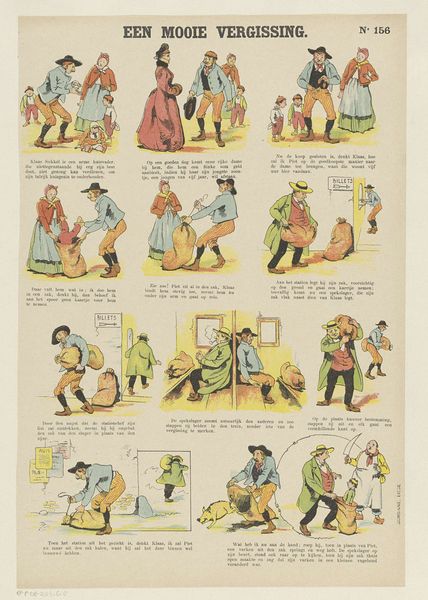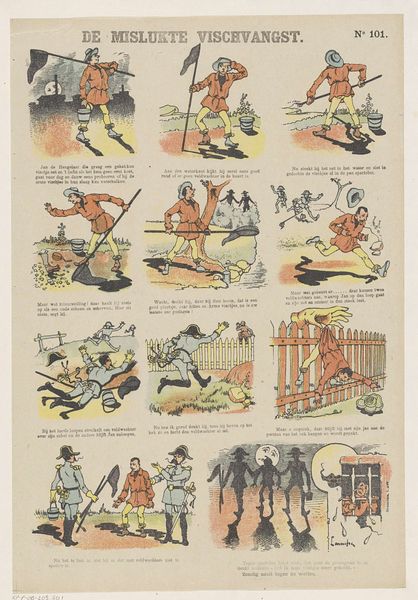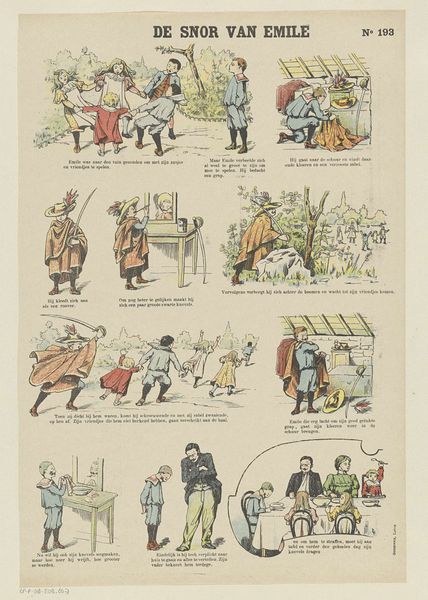
# print
#
comic
#
genre-painting
Dimensions: height 400 mm, width 270 mm
Copyright: Rijks Museum: Open Domain
Curator: This print, “Luie Jan,” its title roughly translating to “Lazy John,” published sometime between 1894 and 1959, appears to be a multi-paneled comic strip, yes? Made from printed materials. What's your initial take? Editor: Yes, exactly! It’s at the Rijksmuseum, and it looks like a page torn from a children's book, or maybe a magazine. Each panel shows a different scene of children interacting with each other. How would you unpack the ways that the print’s medium affects its meaning? Curator: Well, given its likely origin in mass-produced print media, we have to consider how the materials used and the processes of production and distribution shape its reception. This isn't some precious oil painting displayed in a wealthy home. Editor: Good point! It’s printed for mass consumption and distributed through newsstands. Does this imply a focus on everyday life and easily digested social messaging, since comics have such a broad audience? Curator: Precisely! Consider the labor involved – the illustrator, the printers, the distributors. These were likely anonymous figures churning out these images for profit. Look at the composition, too. Are the scenes carefully rendered, using quality papers, paints, and detailed carving? Editor: No, it is printed on cheap paper stock, with quick linework and basic colors, right? I wonder what the economics of children's publishing were like back then and who was supposed to buy this magazine? Curator: An excellent line of inquiry! Consider its intended function within the social fabric. Did it simply exist for entertainment? Or did the narratives depicted serve to guide its young audience into aligning its labor for national growth, and thus ensure greater overall productivity? Editor: Ah, I hadn’t considered that! So the "laziness" is potentially viewed in contrast to future contribution of labor in a growing, national economic landscape? Curator: It’s a hypothesis! But always remember, art is never truly separate from its economic and social context. To really understand art, analyze its origins, its materials, and modes of its creation. Editor: This focus on materiality definitely provides a different insight. It reminds me to analyze not just the 'what' but also the 'how' and the 'why' of production. Thanks, that's really helpful!
Comments
No comments
Be the first to comment and join the conversation on the ultimate creative platform.
